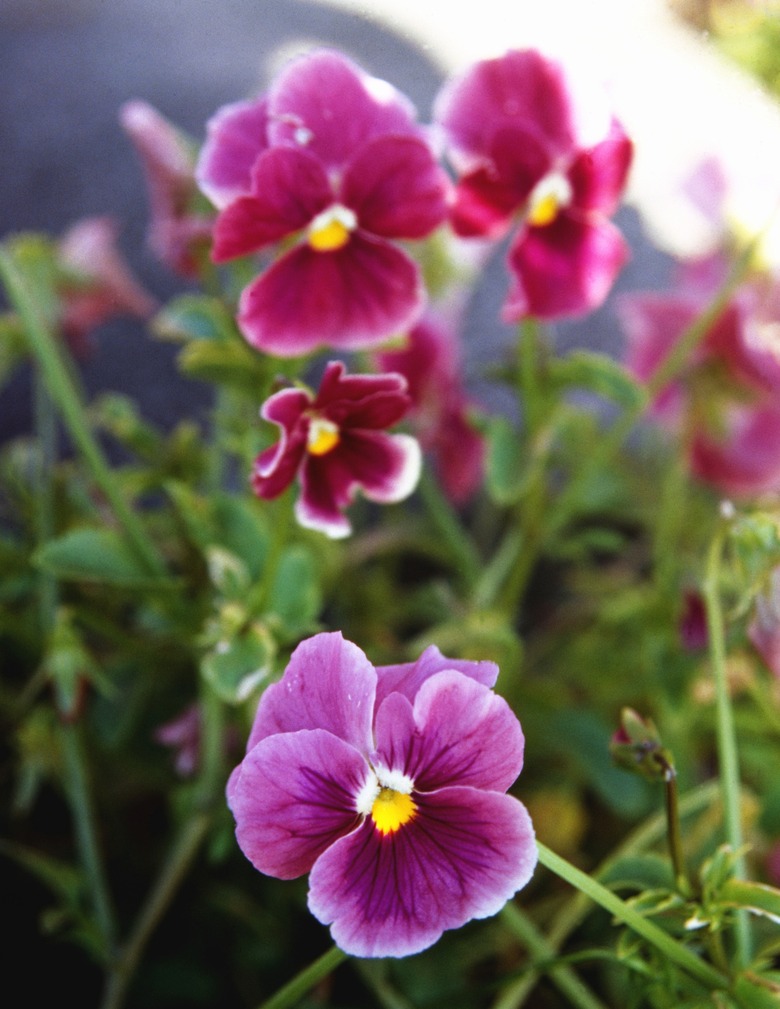Can Snapdragons & Pansies Withstand A Winter Freeze?
Pansies (Viola x wittrockiana) and snapdragons (Antirrhinum majus) are often among the first harbingers of spring. Both are widely available as bedding plants and look charming tucked into mixed flower beds or placed in mixed or individual pots. Both pansies and snapdragons are cold tolerant, although they won't survive severe weather.
Step 1
Both snapdragons and pansies are tender perennials in mild climates. Snapdragons are hardy in U.S. Department of Agriculture plant hardiness zones 7 to 10, while pansies are hardy in USDA zones 6 through 10. In these climates, the plants are often planted in the fall. They bloom from winter to spring before succumbing to the summer heat. In cooler climates north of USDA zones 6 and 7, the plants are grown as hardy annuals. Although they tolerate some cold, they might not survive severe winter weather.
Temperatures
Step 1
You might have seen pansies or snapdragons blooming through snow, and they can withstand fairly cold weather. They can handle a light frost, which is 28 to 32 degrees Fahrenheit, quite successfully. They may even survive a hard freeze, which is 28 F. Both snapdragons and pansies can survive short periods of 20 F weather, but they will probably suffer frost damage. David Goforth of the North Carolina Cooperative Extension says pansies can survive up to eight hours at 10 F. Longer periods of very cold temperatures will kill them.
Step 2
- Both snapdragons and pansies are tender perennials in mild climates.
- They may even survive a hard freeze, which is 28 F. Both snapdragons and pansies can survive short periods of 20 F weather, but they will probably suffer frost damage.
Protection
Step 1
Pansies and snapdragons respond well to a light mulch. Shredded pine needles, wood chips or even weed-free straw keeps them warm and helps them survive cold weather. You can also throw sheets, plastic cloches or agricultural fabric over the plants. Potted pansies and snapdragons are the easiest to deal with. Simply move the pots indoors or into a protected garage during severe weather.
Recommendations
Step 1
In mild climates, you can easily plant pansies and snapdragons in the fall to bloom throughout the winter. If a cold snap threatens, they can be protected with mulch or a fabric covering. For northern gardeners, though, growing snapdragons and pansies is more complicated. If you plant them in the fall, mulch them well. They will then bloom earlier in the spring, if they survive, than they would with spring planting. The problem is that they might not survive. Most northern gardeners opt to plant these flowering annuals in early spring rather than run the risk of killing them over the winter.
Step 2
- Pansies and snapdragons respond well to a light mulch.
- Shredded pine needles, wood chips or even weed-free straw keeps them warm and helps them survive cold weather.
References
- Missouri Botanical Garden: Viola x Wittrockiana
- North Carolina State University Extension: How Pansies Handle the Cold
- Mississippi State University Extension: Snapdragons Make Ideal Fall Plantings
- Missouri Botanical Garden: Antirrhinum Majus
- Botanical Interests: Frost Tolerance of Vegetables
- Houston Chronicle: Plant-By-Plant-Freeze Information
